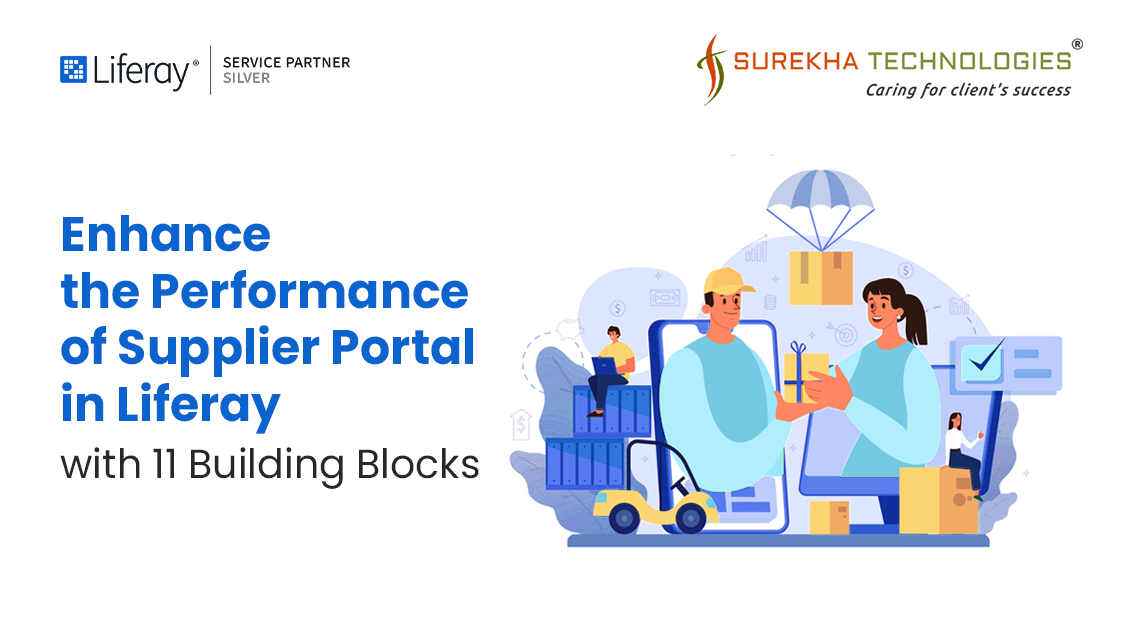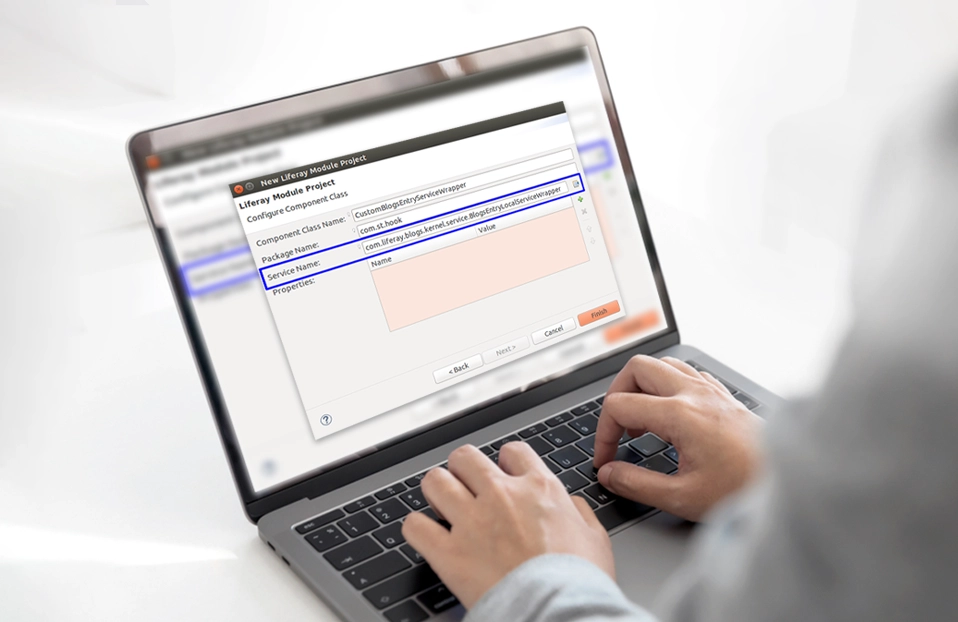A supplier portal serves as a centralized platform facilitating seamless interaction between businesses and their suppliers. Often referred to as a supplier platform or vendor portal, it provides a comprehensive platform for managing supplier relationships, accessing critical data including status of invoicing and payment, and streamlining procurement processes.
Here are some building blocks that supplier portals must include, along with things to consider while selecting the best one for your requirements.
11 Building Blocks to Enhance the Performance of the Supplier Portal in Liferay
Simplified Procurement Info Base
A self-service information base that simplifies your procurement procedure and the types of advantages your suppliers can gain from working with you.
Efficient Self-Service Onboarding
A self-service onboarding procedure that is simple and effective for new vendors.
Product Information Integration
The ability to add information about products to your MDM/PIM database.
Bid Management and Order Tracking
The capacity to obtain bids, record order responses, and monitor the progress of orders to determine if they have been approved or denied.
Campaign and Promotion Management
Using your campaign planning system and calendars to generate, monitor, and evaluate the effectiveness of your promotions and items.
Real-Time Financial Data Access
Availability of timely and relevant financial data, including tracking invoices, accounts payable status, contract performance, etc.
EDI Transaction Metrics
Access to EDI transactions to display metrics such as correctness and fulfillment time.
Real-Time Status Updates
The capability to get real-time status updates and have information or permission requests automatically routed to the appropriate department or person.
Supplier Document Management
Uploading and managing documents relating to supplier health content and regulations.
Unified Supplier Sign-On
A single, streamlined sign-on that allows suppliers to access all the systems they need to communicate with.
Custom Identity and User Management
Robust identity and user management that permits customized access control for every supplier account.
Even if a supplier site works without any of the components, it could not offer all the advantages you could have thought. To maximize the benefits of your supplier portal, look for a platform that integrates all the building blocks.
Things to Consider While Selecting a Supplier Portal
Make sure the supplier portal you choose has the features you will need for both current and future requirements. Remember to set priorities:
Scalability
If you would rather start small, make sure your solution includes the essentials, such supplier knowledge bases and self-service onboarding for new providers. To support more suppliers and apps, your portal must, however, be scalable over time. Be mindful of any additional expenses that can arise from expanding your user base or introducing more features.
Adaptability
A portal solution's features demo can easily amaze one. However, you also need to make sure that your gateway platform is flexible enough to accommodate future changes in business needs. To ensure that the suggested solution integrates with your entire digital ecosystem and provides the resources you need to expand, ask your IT specialists to assess it.
CMS
If you want to encourage communication and cooperation among suppliers, you must provide them with accurate and current information directly. material management systems facilitate the creation and administration of material, including wiki articles, blog posts, and web pages, allowing you to serve as a single information repository.
Management of Digital Assets
Even though most of our communication is done digitally these days, you will still need to manage a variety of information types, such as spreadsheets, PDFs, pictures, videos, Word documents, forms, government and medical certifications, shipping paperwork, and more.
Search
It's imperative that your portal include an enterprise-level search feature to enable users to easily explore and locate the information they require. For instance, utilizing categories, tags, and other metadata properties to refine search results on knowledge bases and FAQ pages will significantly enhance user experience and assist suppliers in managing and resolving simpler issues independently.
Customized Dashboards
Users and different supplier types require access to information according to their product type, user type, or vendor status. Every user account should be able to quickly access and view general information, role-specific data, and other types of dashboards through your portal. A member of the sales or logistics team, for example, will require a very different perspective than someone in the accounting department of your supplier.
Capabilities for Integration
Native connectors, APIs, and other integration tools can be used to integrate a supplier portal with external technology. Integrate current systems to display data from within the portal, such as the number of open tickets, inventory levels, and purchase order statuses.
Automated Processes
The ability to design automated workflows to streamline repetitive tasks is one of the benefits of an enterprise portal platform. To track the status of purchase orders, for example, you can establish a workflow and set a service level agreement (SLA) that will notify suppliers automatically if they don't respond within five business days. Additionally, suppliers should be able to request adjustments directly through the portal if an invoice needs to be updated, doing away with the requirement for phone calls or emails.
Management of User Experience
Developing a great user experience with logical paths and easy navigation is essential. To help both parties save time, your supplier portal should ideally include all the websites and services that both internal teams and suppliers use under a single login and password (single sign-on). Additionally, business users should be able to make changes that impact the user experience with the portal platform of their choice without requiring IT teams to get involved thanks to low-code capabilities.
Conclusion
The increasing complexity of the global supply chain and the growing reliance on business relationships on self-service solutions on supplier portals will make them important. These solutions give you control over real-time supplier relationship management in addition to enhanced visibility and communication. As a result, the supplier portals become mode for digitizing all relevant interactions and keeping track of them on a single platform.
Thus, a supplier portal that works well must be layered over your current systems to provide a view of behind the scenes. Build your supplier portal using Liferay Portal solutions.
Liferay DXP represents a enterprise portal development solution that provides businesses with a foundation for delivering personalized and digital experiences across multiple consumer touchpoints. These Digital Experience Platforms (DXPs) come equipped with pre-built features designed to streamline the creation, management, and optimization of digital interactions. What sets DXPs apart is their ability to integrate seamlessly with other technologies, enabling the aggregation of relevant data and fostering a more interconnected digital ecosystem.



